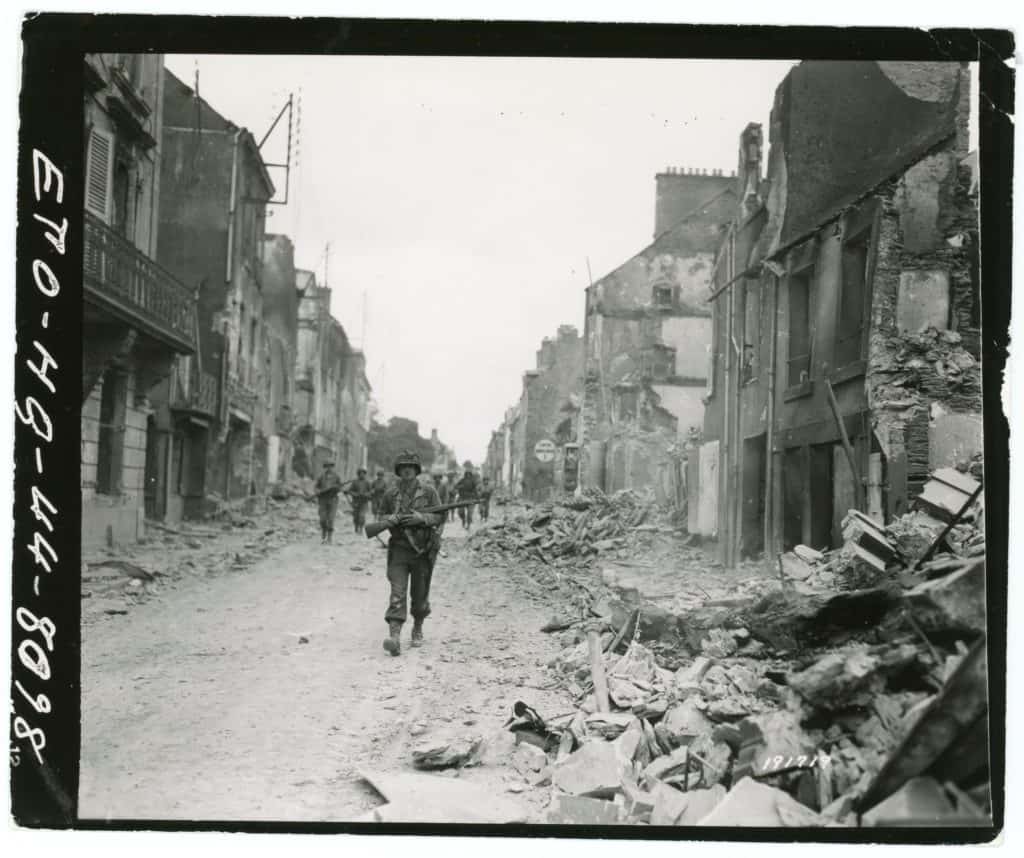Saving Private Ryan and Thanksgiving

A Veteran Reflects
By John W. Van de Kamp
As the year draws to a close and days shorten, Veterans Day arrives just before Thanksgiving.
The 1999 film Saving Private Ryan, winner of 11 Academy awards that year, brings the horror, effects, immediacy of war, and sacrifice of American men and women in uniform to life. It paints a picture of pure hell.
Not everyone knows that the soldiers the movie depicts were from Chesapeake Country. It was based on the experience of Company A, of the 29th Infantry Division, Maryland and Virginia National Guard’s well-trained and battle-prepared soldiers commanded by Maj. Gen. Charles H. Gerhardt.
Nearly every member of Company A died as they stormed Omaha Beach, the most heavily fortified position in Normandy, in the first assault wave beginning at 6:30 a.m. on June 6, 1944.
They waded through high surf, steel and wooden obstacles, while mortars, artillery fire, and machine gun fire rained down on them along a perpendicular line from two directions from the Wehrmacht’s 352nd Infantry Division 170 feet above the beach.
Company A lost 70 percent of its men within 10 minutes of leaving the landing craft. Six of the survivors later assaulted the bluffs. The town of Bedford, Va. alone lost 22 men.
Company B fought among heavy boulders under intense mortar fire. Under Lt. Walter Taylor—“He had no fear of anything,” one of his men recalled—the company broke through, attacked a chateau and took German prisoners.
Company M from Annapolis was a heavy weapons unit with machine guns and mortars. It came ashore later, at 1100 hours, not expecting any opposition, but was taking fire as soon as the men came down the landing crafts’ ramps.
The 29th Division, 116th Infantry, lost one-third of its members on D-Day —over 1,000 of 3,200 men. By evening, it has secured a beachhead 5 miles deep.
These young men who died were from 17 to 24 years old. Many left sweethearts, never to have a family. Some left children who would never know their father.
I met a survivor one day as we entered a supermarket. He was wearing a World War II veteran baseball cap. He was a member of Company A, and said that the movie is extremely realistic.
Gen. Sir Bernard Law Montgomery said, “When you see Omaha Beach, you’ve got to wonder how the Americans got ashore. They were hanging on by their eyelids. I’m overcome by the gallantry of the American chap, who is, without a doubt, a very brave soldier.”
In the American military cemetery in Margraten, the Netherlands, kind Dutch families care for the graves of American soldiers. Men from Maryland’s 29th Infantry Division are there, including Technical Sgt. Leo S. Scarlett (Dec. 8, 1944, Missing in Action) and Private Carl T. Brown (Nov. 18, 1944, Section G, Row B, Grave 10), who was 24 years old, single, worked on a farm, and enlisted in Baltimore. Second Lt. McMurtry Welsh (Section L, Row 4, Grave 9), also enlisted in Baltimore.
These men’s sacrifices and courage make it possible for us to spend Thanksgiving with our families, vote, and live lives of freedom.
When Cal and Billy Ripken were the Orioles’ perfect double-play combination, my son and I often went to games at Memorial Stadium. You couldn’t miss these words high above the ballpark entrance:
“Erected by the City of Baltimore 1954, dedicated by the mayor and the city council and the people of Baltimore City in the state of Maryland as a memorial to all who so valiantly fought and served in the world wars with eternal gratitude to those who made the supreme sacrifice to preserve equality and freedom through the world. Time will not dim the glory of their deeds.”
John W. Van de Kamp is a retired U.S. Air Force colonel.
